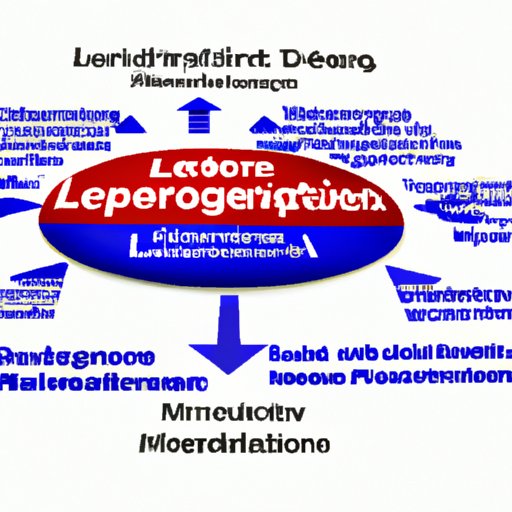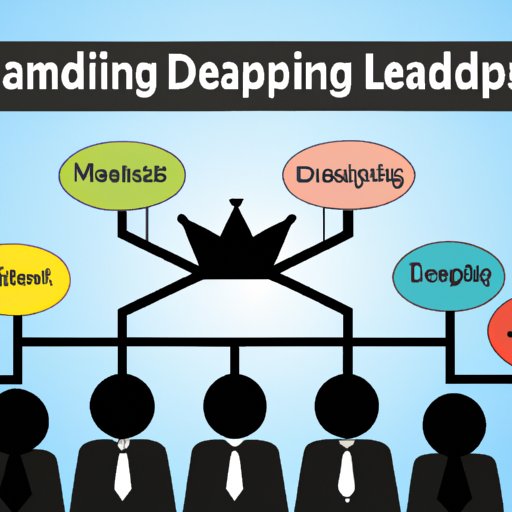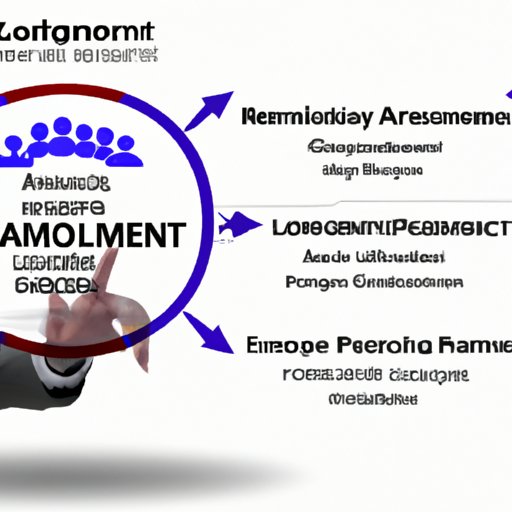Introduction
Leadership development is an important factor for any organization looking to improve employee engagement, team performance, and overall success. Leadership development refers to the process of providing employees with the skills, knowledge, and experience they need to effectively lead teams and help the organization reach its goals. By investing in leadership development, organizations are able to create a culture of learning and growth that encourages collaboration, creativity, and innovation.
Exploring Different Types of Leadership Development Programs
There are a variety of different types of leadership development programs that can be implemented in the workplace. These include traditional classroom training, executive coaching, mentorship programs, and online learning. Each of these has its own set of benefits and drawbacks, so it is important to select the most appropriate option for the organization’s needs.
Traditional Classroom Training
Traditional classroom training is a popular choice for many organizations. It involves bringing in instructors to teach courses on topics such as communication, problem-solving, decision-making, and conflict resolution. This type of training provides participants with an opportunity to learn from experienced professionals and gain hands-on experience in the classroom setting.
Executive Coaching
Executive coaching is another popular option. It involves working one-on-one with a coach to identify areas of improvement and develop a plan of action. Coaches can provide personalized feedback and guidance to help leaders become more effective in their roles.
Mentorship Programs
Mentorship programs are also beneficial for leadership development. They involve pairing experienced leaders with less experienced employees to share their knowledge and provide guidance. This type of program is especially useful for developing leadership skills in younger employees or those new to the organization.
Online Learning
Finally, online learning is becoming increasingly popular for leadership development. Through online courses and webinars, participants can learn at their own pace and get access to a wide range of materials and resources. This type of learning provides flexibility and convenience, allowing participants to fit it into their schedules.

Analyzing the Impact of Leadership Development on Employee Engagement
Investing in leadership development has a positive impact on employee engagement. When employees feel like they are being given the tools and resources they need to succeed, they are more likely to be motivated and productive. Here are some of the ways that leadership development can improve employee engagement:
Improved Communication Skills
Leadership development helps employees hone their communication skills. By teaching them how to effectively communicate with others, they can better collaborate with their colleagues and build stronger relationships. This leads to increased job satisfaction and a greater sense of belonging.
Increased Job Satisfaction
Leadership development also helps employees feel more confident in their abilities and gives them the skills they need to take on new challenges. This can lead to increased job satisfaction and a greater sense of purpose in their work.
Greater Sense of Belonging
Finally, leadership development helps employees feel more connected to the organization. By giving them the opportunity to learn and grow, they become more invested in the company’s mission and vision, which leads to a greater sense of belonging.

Understanding the Role of Leadership Development in Organizational Success
Leadership development plays a key role in organizational success. By investing in leadership development, organizations are able to create a culture of learning and growth that encourages collaboration, creativity, and innovation. Here are some of the ways that leadership development can enhance team performance and drive organizational success:
Enhancing Team Performance
Leadership development helps teams perform better by teaching them how to communicate effectively, manage conflict, and problem-solve creatively. By equipping employees with the skills they need to succeed, organizations can create a culture of success that drives performance.
Developing Creative Problem-Solving Skills
Leadership development also helps teams develop creative problem-solving skills. By teaching employees how to think outside the box and come up with innovative solutions, organizations can foster an environment of innovation and creativity.
Increasing Productivity
Finally, leadership development can help increase productivity by equipping employees with the skills and knowledge they need to work efficiently and effectively. With the right training and guidance, teams can become more efficient and productive, leading to improved organizational performance.
Identifying Strategies for Effective Leadership Development
In order for leadership development to be effective, organizations must have a clear strategy in place. Here are some tips for creating an effective leadership development program:
Defining Clear Goals and Objectives
The first step in creating an effective leadership development program is to define clear goals and objectives. Organizations should identify what they want to achieve with their program and develop measurable objectives to track progress.
Establishing a Structured Process
Organizations should also establish a structured process for their leadership development program. This should include outlining the steps for developing and implementing the program, assigning roles and responsibilities, and setting timelines for completion.
Assessing Results and Making Adjustments
Finally, organizations should assess the results of their leadership development program and make adjustments as necessary. This will help ensure that the program is meeting its goals and objectives and that employees are benefiting from the training.

Investigating How Leadership Development Can Enhance Team Performance
Leadership development can also help enhance team performance by encouraging collaboration, empowering employees, and building trust. Here are some ways that organizations can use leadership development to foster a culture of collaboration, empowerment, and trust:
Encouraging Collaboration
Leadership development can help teams work together more effectively by teaching them how to communicate, listen, and compromise. By teaching employees how to collaborate effectively, organizations can create an environment of cooperation and mutual respect.
Empowering Employees
Leadership development can also help empower employees by teaching them how to take initiative, make decisions, and take ownership of their work. By giving employees the confidence to take on new challenges and responsibilities, organizations can create an environment where everyone can thrive.
Building Trust
Finally, leadership development can help build trust within teams by teaching employees how to give and receive feedback. By creating an environment where employees feel comfortable expressing themselves and sharing ideas, organizations can foster a culture of trust and respect.
Assessing the Cost-Benefit Analysis of Leadership Development
When considering investing in leadership development, it is important to conduct a cost-benefit analysis to determine if the program is worth the investment. Here are some things to consider when assessing the cost-benefit analysis of leadership development:
Calculating ROI
Organizations should calculate the return on investment (ROI) of their leadership development program. This involves determining how much money the program will cost versus how much money it will generate in terms of increased revenue, reduced costs, and improved performance.
Examining Long-Term Benefits
Organizations should also examine the long-term benefits of leadership development. The program may require an initial investment, but the long-term benefits can far outweigh the short-term costs.
Comparing Costs to Other Options
Finally, organizations should compare the costs of leadership development to other options. For example, they may find that hiring an executive coach is more cost-effective than running a traditional classroom training program.
Conclusion
In conclusion, leadership development is a valuable investment for any organization looking to increase employee engagement and team performance. It can help enhance communication skills, increase job satisfaction, and build trust within teams. Additionally, it can lead to improved team performance, greater creativity, and higher productivity. Finally, organizations should assess the cost-benefit analysis of their leadership development program before investing in it to ensure that it is worth the investment.
(Note: Is this article not meeting your expectations? Do you have knowledge or insights to share? Unlock new opportunities and expand your reach by joining our authors team. Click Registration to join us and share your expertise with our readers.)
